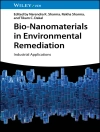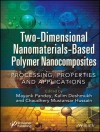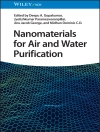This book describes the most effective application of chemicals in bleaching. It starts with a brief overview of the history of bleaching and then focuses on recent developments. The ban of chlorine from bleaching pulp has shifted bleaching to environmentally sound procedures. Elementary Chlorine Free bleaching (ECF bleaching) and Totally Chlorine Free bleaching (TCF bleaching) are explained. The potential of different bleaching chemicals is exemplified in detail with a special focus on what to do and what to avoid. Very recent knowledge about the sources of yellowing is utilized to explain the ideal strategy for the removal of chromophores and their precursors. Emphasis is placed on applicable bleaching, in clear contrast to sophisticated, complicated or simply expensive pseudo modern bleaching.
The target of this book is to explain the potential and the limitations of different chemicals and to demonstrate the necessity of comprehensive solutions for an environmentally sound use of the raw material wood, of chemicals, and of water in the production of pulp with top quality and yield.
This book
- should educate students in the art of bleaching,
- assist mill personal in their continuous effort for process optimization,
- help research and technology managers to successfully select their targets, and
- be on hand as reference of the most recent bleaching technology.
Inhoudsopgave
Introduction
Bleaching agents, properties and generation
Oxidizing agents; Reducing agents; Enzymes; Supporting chemicals; Risk and safety phrases
Bleaching of Chemical Pulp
Bleaching stages and sequences; Oxygen delignification; Chlorine dioxide; Alkaline extraction; Hydrogen peroxide bleaching; Ozone in pulp delignification; Exotic bleaching chemicals; TCF bleaching of pulp; Yield in bleaching; Effluent ‘free’ processes
Stability of Brightness
Final bleaching with chlorine dioxide or peroxide; Final bleaching with peracetic acid or ozone; Brightness stability in TCF and ECF ‘light’ bleaching
Bleaching of Mechanical Pulp
Reductive bleaching; Metals management; Bleaching with hydrogen peroxide; Conventional activation and stabilization; Modified peroxide activation; Control strategy in bleaching; Trouble shooting
Brightening of secondary fiber
Recycling of paper and board; Recycling for printing paper; Recycling for production of tissue; Recycling for production of board; Trouble shooting in deinking plants
General aspects of Pulp Production
Pulp strength; Wood resources; Emissions; Solid waste
Bleaching of Other Material
Outlook
Over de auteur
Ulrich Suess , Evonik Degussa Gmb H, Hanau-Wolfgang, Germany.












